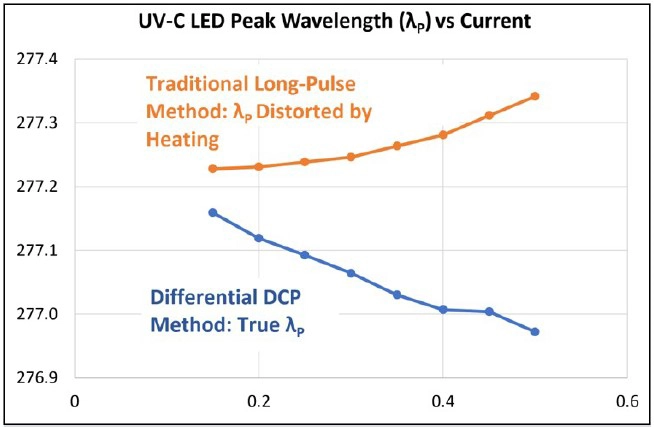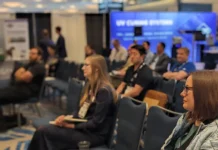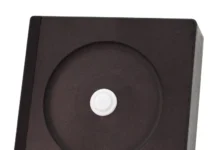By C. Cameron Miller, NIST, Yuqin Zong, NIST, and Jeff Hulett, Vektrex
Measurement science and technology, documentary standards and transfer standard artifacts are the backbone of a functioning, viable economy. Measurements underpin trade, allowing parties to exchange goods for currency and to interchange functionally similar items. Accurate measurements greatly benefit goods manufacturers; they are essential for quality control and also facilitate impartial assessment of productivity improvements or setbacks. Accredited measurements further instill confidence and help ensure that the customer is satisfied with the operation of the product.
Every measurement aspires to be accurate, but ultimate accuracy often only can be achieved at extreme cost. A good measurement provides the necessary accuracy at a reasonable cost; it is founded in the practical knowledge captured in documentary standards, along with collective investment in transfer standard artifacts, such as the platinum-iridium kilogram standard maintained by the Bureau International des Poids et Mesures in Sevres, France.
The impact of good measurements
Good measurements have direct impact on the efficiency of labor used to generate output (Labor Productivity) and the efficiency of capital used to generate output (Capital Productivity). Labor Productivity and Capital Productivity are the two inputs used to determine the Gross Domestic Productivity (GDP) of an economy.
Thus, documentary standards can contribute to the overall “knowledge stock” in an economy and, therefore, improve the efficiency of use. International Organization for Standardization studies have found that an increase in standards was correlated with a measure of economic growth.
Standards especially are helpful at inflection points in the growth of an industry. Standards introduced at that time can proliferate “best practice” methods, eliminate duplication of effort and reduce the potential for error or misuse. The germicidal-ultraviolet (GUV) industry is at such a point: while it has existed for decades, recent source technology changes, along with increased need to neutralize pathogens, leave the GUV industry poised for an increase in documentary standards to stimulate economic growth.
The GUV industry today requires standards at every step of the process, from measuring the number of photons generated by an LED or lamp source in each direction to titrating the number of photons required to inactivate a pathogen in various environments (e.g., aerosols, surfaces, biofilm layers). Additionally, standards and guides for incorporating GUV devices into an application are needed; these must cover verification of correct implementation and required maintenance under continued operation. Many standards-developing organizations have mobilized to draft and ballot these broad-scope standards.
UVC measurement standards
In May 2020, the Illuminating Engineering Society (IES) and International Ultraviolet Association (IUVA) signed a memorandum of understanding to assemble a group of experts in the measurement of ultraviolet C-band (UVC) emissions to develop American National Standards (ANSI Standards) for the measurement and characterization of UVC device performance. These ANSI standards will enable a consistent measurement method for determining the number of photons generated by a device and its flux in each direction.
The first published standard documents have focused on the measurement of source components. ANSI/IES/IUVA LM-92-22, “Approved Method: Optical and Electrical Measurement of Ultraviolet LEDs,” established test methods for UV LEDs with peak wavelengths of 200 mm to 400 nm. UV LEDs present unique challenges compared with visible LEDs. One such challenge is that many UVC LEDs exhibit a high forward voltage immediately after current is applied. The voltage surge lasts a few milliseconds – long enough to make it impossible to use voltage for the measurement’s junction temperature assessment. A test method called the Differential Continuous Pulse (DCP) was developed to overcome this and other issues, including errors in the current pulse timing and pulse shape errors. The DCP method uses very short pulses (tens of microseconds) to limit junction heating, and it involves subtracting two individual measurements with different pulse lengths to produce a differential measurement result that is much more accurate (Image 1).
ANSI/IES/IUVA LM-93-22, “Approved Method: Optical and Electrical Measurements of Far UV-C Excimer Sources,” is the second published standard document. The wavelength range considered for the purposes of this standard is 200 nm to 300 nm. It establishes a measurement method for excimer lamps, and it focuses on lamps that predominantly emit within the far UVC range (200 nm to 230 nm). The standard also considers measurement challenges unique to far UVC lamps – challenges in the measurement of irradiance, spectral distribution and angular distribution of the optical radiation. The document relies heavily on another IES publication, ANSI/IES LM-91-22, “Approved Method: Application Distance Radiometry,” which recently has been released.
Three more standard documents focused on source components are in preparation. The “Approved Method for Optical and Electrical Measurements of Low-Pressure Mercury (LPM) Sources” will have an expanded scope compared to the ISO 15727:2020 (E), “UV-C devices – Measurement of the output of a UV-C lamp.” The ISO standard covers only linear LPM lamps; it uses an irradiance measurement to calculate the total radiant flux using the formula based on Keitz’s work. The IES/IUVA document will cover LPM lamps of any structure (e.g., U-shape or serpentine). It includes angular radiant intensity measurements, total radiant flux measurements using integrating spheres and the application of the Keitz method for stabilized or peak measurements of linear LPM lamps. The remaining two source-component standards will cover medium-pressure mercury lamps and pulsed xenon lamps.
After the source-component standards, probably the most important standard to be developed is a general one that measures the angular radiant intensity distribution and total radiant flux for any GUV device that is meant to plug into a branch circuit, using a measurement method that is independent of the technology used to generate the UV photons. This is equivalent to ANSI/IES LM-79-19, “Approved Method: Optical and Electrical Measurements of Solid-State Lighting Products,” used in the visible lighting industry. This document will provide a measurement method to obtain results that can be used to compare commercially available products, even if they are based upon dissimilar technologies.
More guidance likely
These in-place and planned standards might seem comprehensive, but a look at the larger and more mature visible lighting industry indicates that additional standards eventually may be needed. The visible lighting industry has many application-differentiated standards (e.g., roadway, indoor, outdoor). Likewise, some GUV applications, such as upper-room air disinfection, may require specific measurements that are not needed for all GUV applications. These unique measurements are best described in an application-specific standard.
During the early development of the documents discussed here, the groups realized that commercially available detectors used to measure the photons from the GUV devices have a significant range in quality and capability. An educational document is in development that discuss calibrating, characterizing and using detectors designed to measure GUV devices.
As an example, many detectors are calibrated with UV optical radiation that contacts the surface of the detector perpendicularly, from a point source far away. These detectors then are used in an application where the UV radiation comes from all directions. This mismatch produces errors, ranging from 2% to 300%, depending on the quality of the detector, and it is one of the biggest barriers to good UV measurements. This document will educate the user on this issue and other detector pitfalls and provide guidance for determining the potential magnitude of errors.
Together, these existing and upcoming GUV documentary standards will provide the industry with a set of tools for good measurements. By applying these tools, GUV component and product designers can assess and improve their products and end users objectively can evaluate performance. The reduced costs and greater efficiencies that derive from improved tools will, in turn, spur growth in the industry, enabling the GUV economy to thrive and to better serve greater society.
References
- “NIST Engineering Statistics Handbook, Section 2.3.1.2 Reference Standards,” https://www.itl.nist.gov/div898/handbook/mpc/section3/mpc312.htm
- “Standards & economic growth: ISO members’ research on the impact of standards on their national economies,” ISO Research & Innovation, 2021, Edition 1, https://www.iso.org/files/live/sites/isoorg/files/store/en/PUB100456.pdf
- J. Hulett, C.C. Miller, Y. Zong, “Unique collaboration produces LM-92 UV LED testing standard,” LEDs Magazine, July 26, 2022
- C.C. Miller and A. Jillavenkatesa, “Pathway to Developing a UV-C Standard – A Guide to International Standards Development,” IUVA News / Vol. 20 No. 4
- Y. Zong, J. Hulett, N. Koide, Y. Yamaji, C.C. Miller, “Mean Differential Continuous Pulse Method for Accurate Optical Measurements of Light-Emitting Diodes and Laser Diodes,” J Res NIST, 126, Article 126034, 2021.
- Keitz H.A.E. 1971, Light Calculations and Measurements, Macmillan and Co Ltd, London, UK






